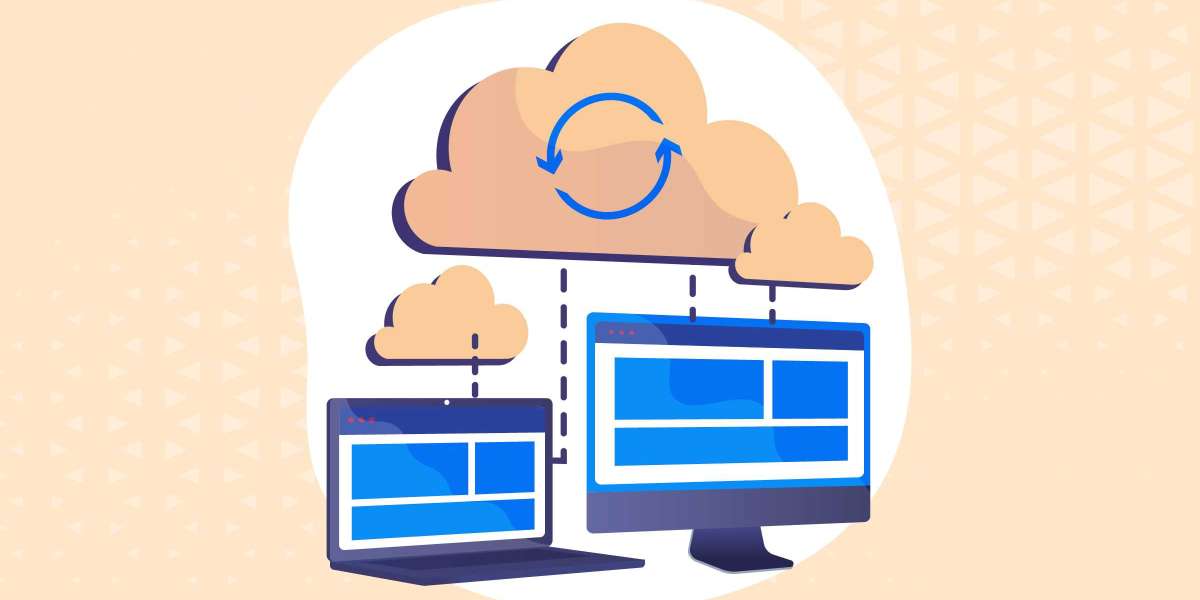Cloud application performance refers to the speed, efficiency, and overall effectiveness of an application that is hosted and delivered through the cloud. It is a measure of how well the application performs its intended functions and meets user expectations. This includes factors such as response times, availability, scalability, and reliability. In a cloud environment, the performance of an application is deeply affected by various factors such as network latency, server capacity, and the overall architecture of the cloud infrastructure.
Cloud application performance is a crucial aspect to consider, as it directly impacts user satisfaction, productivity, and business outcomes. A slow or poorly performing application can frustrate users, leading to dissatisfaction, decreased productivity, and ultimately, loss of revenue.
Therefore, organizations that rely on cloud-based applications must prioritize performance optimization to ensure that their applications deliver excellent user experiences. This involves monitoring, measuring, and continually improving the performance of cloud applications to meet the evolving demands and expectations of users.
• Response times: The speed at which the application responds to user requests is a critical factor in determining its performance. Users expect applications to be fast and responsive, with minimal delays or lag.
• Availability: Cloud applications should be accessible and available for users whenever they need them. Downtime or service interruptions can significantly impact user experience and productivity.
• Scalability: Cloud applications must have the ability to handle increasing volumes of users, data, and transactions without compromising performance. Scalability ensures that the application remains responsive even under high loads.
• Reliability: Users rely on cloud applications to perform their intended functions consistently and reliably. Application failures or errors can lead to frustration and loss of trust.
• Network latency: The time it takes for data packets to travel between the user's device and the cloud server affects overall application performance. Lower network latency results in faster response times.
• Server capacity: The resources allocated to host an application in the cloud impact its performance. Sufficient server capacity is necessary to handle concurrent user requests without slowdowns or bottlenecks.
• Cloud infrastructure architecture: The design and configuration of the underlying cloud infrastructure play a crucial role in determining application performance. A well-architected infrastructure can optimize resource allocation, minimize latency, and improve overall efficiency.
Monitoring tools are essential for measuring key metrics related to cloud application performance, such as response times, error rates, CPU utilization, memory usage, network bandwidth, etc. These tools help identify bottlenecks or issues affecting performance so that appropriate actions can be taken promptly.
Continual improvement efforts involve optimizing code quality, database queries optimization caching strategies implementation among other techniques.
By prioritizing cloud application performance optimization strategies organizations ensure better end-user experiences leading ultimately to higher satisfaction levels amongst customers as well as improved business outcomes
Why is Performance Optimization Important for Cloud Applications?
Performance optimization is a crucial aspect when it comes to cloud applications. The importance lies in ensuring that these applications operate efficiently and deliver a seamless experience to users. With the increasing reliance on cloud-based services, optimizing performance has become even more critical to meet the growing demands and expectations of users.
One of the key reasons why performance optimization is crucial for cloud applications is its impact on user satisfaction. Users expect applications to perform quickly and smoothly, without experiencing delays or disruptions. If a cloud application is slow or unreliable, it can lead to frustration, dissatisfaction, and even abandonment.
Therefore, by optimizing performance, cloud applications can deliver a better user experience, resulting in increased customer satisfaction and loyalty. Additionally, improved performance can also enhance productivity and efficiency for businesses, as employees can access and utilize applications more effectively.
Common Challenges in Cloud Application Performance Optimization
Cloud application performance optimization poses several common challenges that need to be addressed for efficient and smooth operations. One of the primary challenges is the dynamic nature of cloud environments. Cloud infrastructures are known for their scalability and flexibility, which allows applications to scale up or down based on demand.
However, this dynamic nature can create performance optimization challenges as the application needs to adapt to changing resources and infrastructure configurations. Ensuring that the application performs optimally under varying conditions is a complex task that requires careful monitoring and proactive optimization techniques.
Another significant challenge in cloud application performance optimization is the inherent complexity of distributed systems. Cloud applications typically run on multiple servers or data centers, utilizing various services and resources across the cloud infrastructure.
Coordinating and managing these different components can be a daunting task. Inefficient resource allocation, lack of synchronization, and suboptimal load balancing can all contribute to poor performance. Therefore, addressing the challenges associated with managing and optimizing distributed systems is crucial to improving cloud application performance.
Understanding the Impact of Network Latency on Cloud Application Performance
Network latency refers to the delay in transmitting data packets over a network. In the context of cloud applications, network latency can have a significant impact on performance. When there is high latency, the time taken for requests to travel from the user to the cloud server and back increases, resulting in slower response times.
One of the key reasons why network latency affects cloud application performance is the increased round-trip time for data transmission. The delay in sending and receiving data packets can cause a noticeable lag in the user experience, especially for applications that require real-time interaction or involve large data transfers.
Additionally, network latency can also lead to higher packet loss, which further degrades performance. This can result in data packets being dropped, leading to the need for retransmission and further delays in processing requests.
How to Monitor and Measure Cloud Application Performance
To effectively monitor and measure cloud application performance, it is crucial to establish a comprehensive monitoring framework. This includes utilizing various monitoring tools and technologies that are specifically designed for cloud environments. These tools allow for real-time monitoring of key performance metrics such as response time, throughput, and resource utilization.
In addition to utilizing monitoring tools, it is also important to establish a robust logging and analytics system. By collecting and analyzing log data from various components of the cloud application, it becomes possible to gain insights into potential performance bottlenecks and areas for optimization. These insights can then be used to make informed decisions and take proactive measures to improve the overall performance of the cloud application.
Strategies for Improving Cloud Application Performance
One strategy for improving cloud application performance is through optimizing the code and architecture of the application itself. This involves analyzing the code to identify any bottlenecks or unnecessary processes that may be causing performance issues. By refactoring the code and streamlining the architecture, developers can ensure that the application runs more efficiently and responds faster to user requests.
Another strategy is to leverage caching mechanisms to reduce the load on the application and improve response times. Caching involves storing frequently accessed data or resources at various levels, such as the client-side, server-side, or even in the distributed caching layer. This allows the application to retrieve the data or resources more quickly, as it doesn't need to fetch them from the source every time. Implementing an effective caching strategy can significantly enhance the performance of a cloud application, especially for content that doesn't frequently change.
FAQ
What is cloud application performance?
Cloud application performance refers to the speed, responsiveness, and overall efficiency of applications that are hosted and accessed through the cloud. It encompasses factors such as load times, latency, and the ability to handle user requests effectively.
Why is performance optimization important for cloud applications?
Performance optimization is crucial for cloud applications because it directly impacts user experience and business productivity. Slow or unresponsive applications can lead to frustrated users, decreased customer satisfaction, and even loss of revenue. Optimizing performance ensures smooth and efficient operation of cloud applications.
What are the common challenges in cloud application performance optimization?
Common challenges in cloud application performance optimization include network latency, resource limitations, scalability issues, inefficient coding or architecture, and lack of visibility into application behavior. These challenges can affect the overall performance and responsiveness of cloud applications.
How does network latency impact cloud application performance?
Network latency refers to the delay or lag in data transmission over a network. High network latency can significantly impact cloud application performance by increasing load times, slowing down data transfer, and causing delays in user interactions. Minimizing network latency is essential for improving the overall performance of cloud applications.
How can I monitor and measure cloud application performance?
Monitoring and measuring cloud application performance involves using various tools and techniques to track key performance indicators (KPIs), such as response times, throughput, error rates, and resource utilization. Performance monitoring tools, log analysis, and user experience testing can provide valuable insights into the performance of cloud applications.
What are some strategies for improving cloud application performance?
Some strategies for improving cloud application performance include optimizing code and architecture, implementing caching mechanisms, leveraging content delivery networks (CDNs), optimizing database performance, load balancing, scaling resources as needed, and continuous performance monitoring and testing. These strategies help enhance the speed, responsiveness, and overall efficiency of cloud applications.








